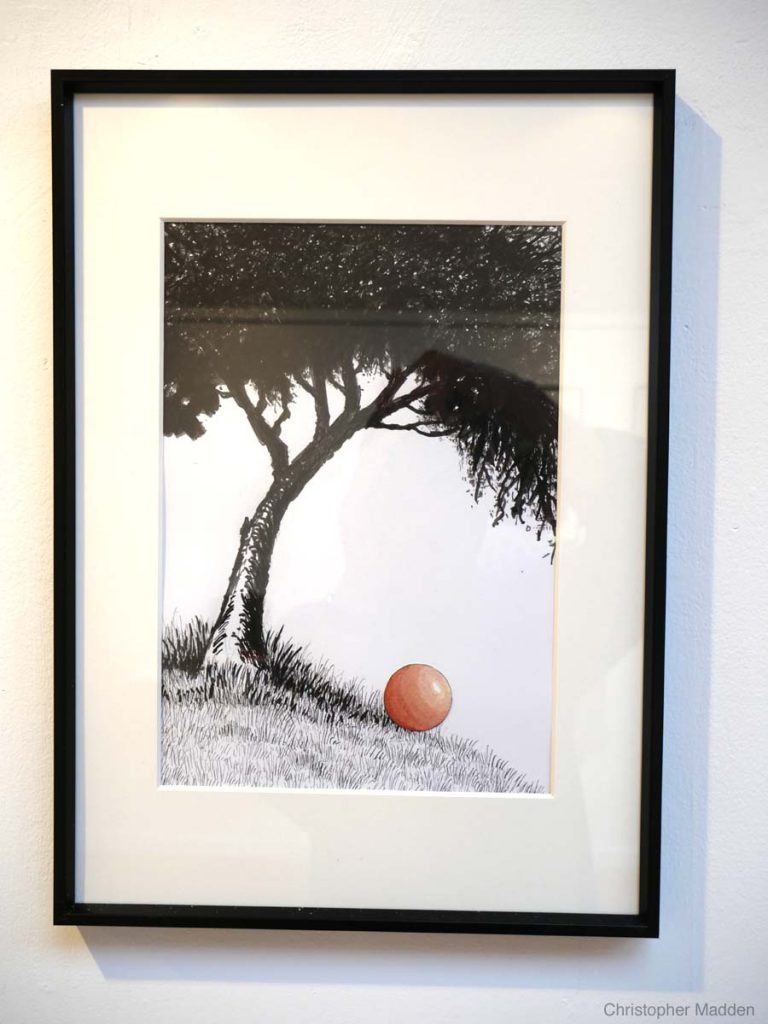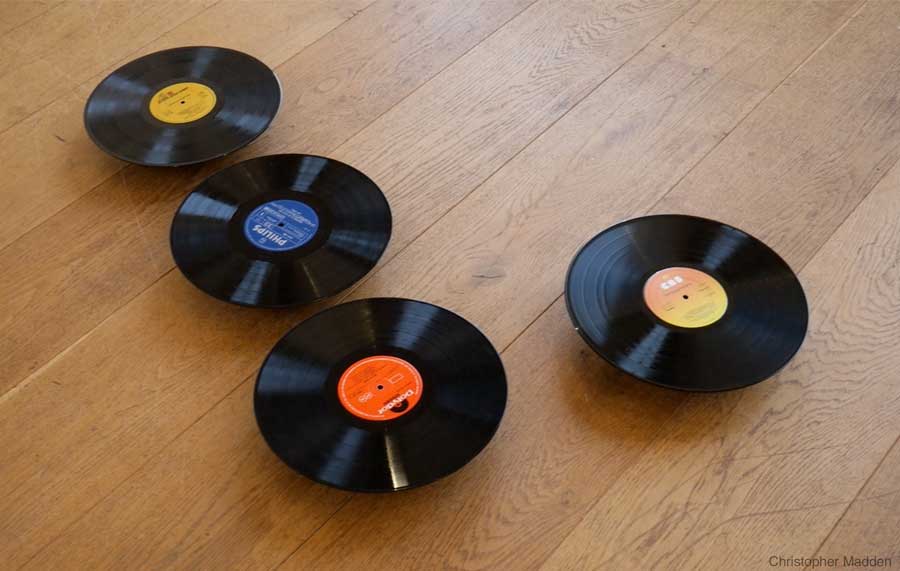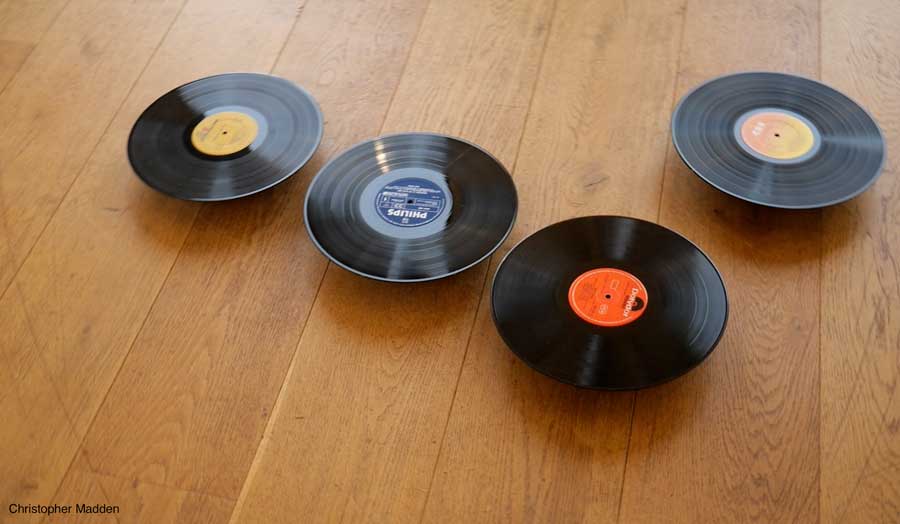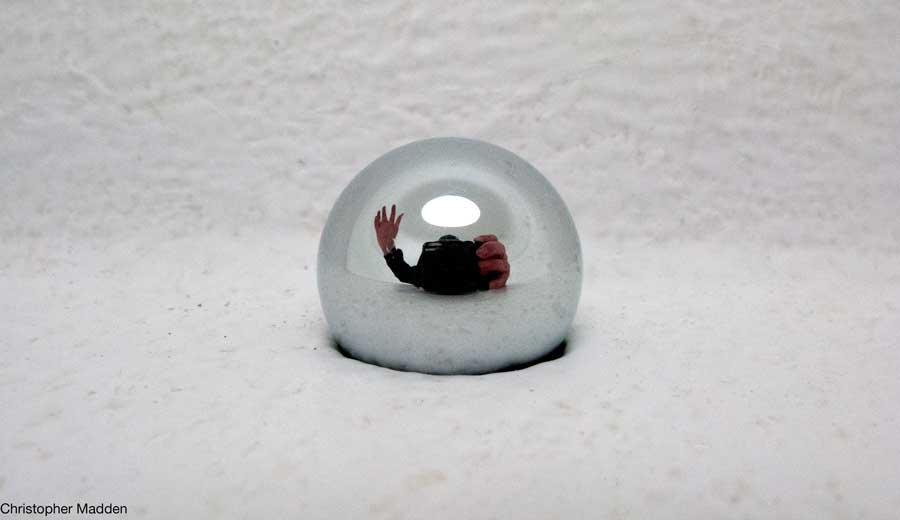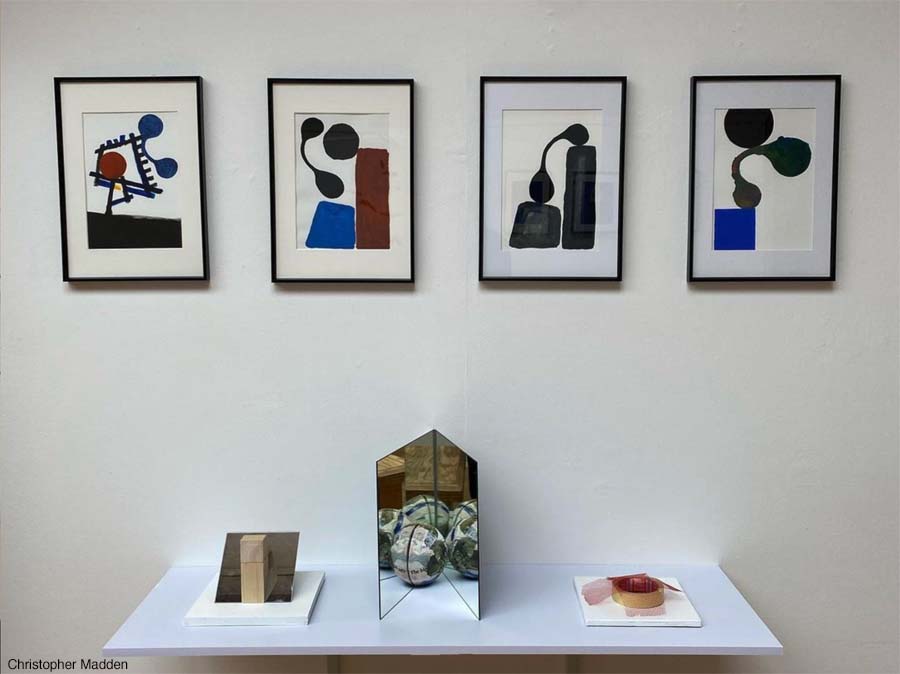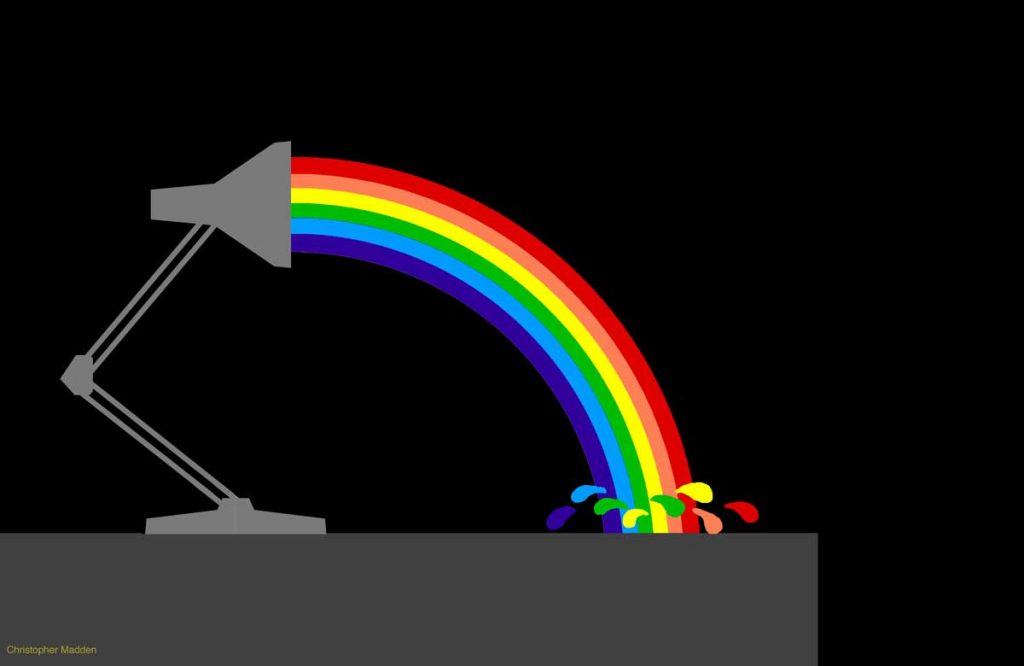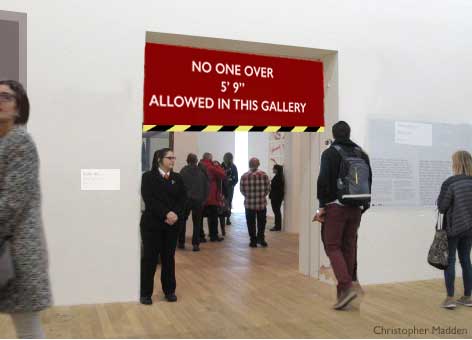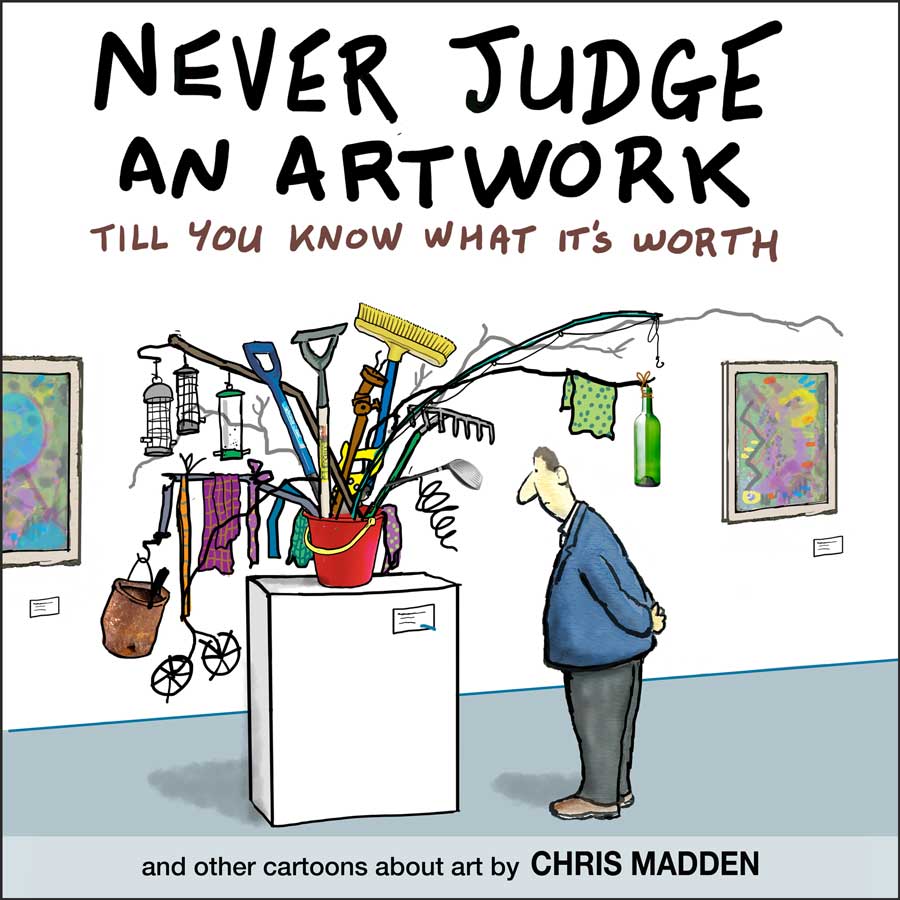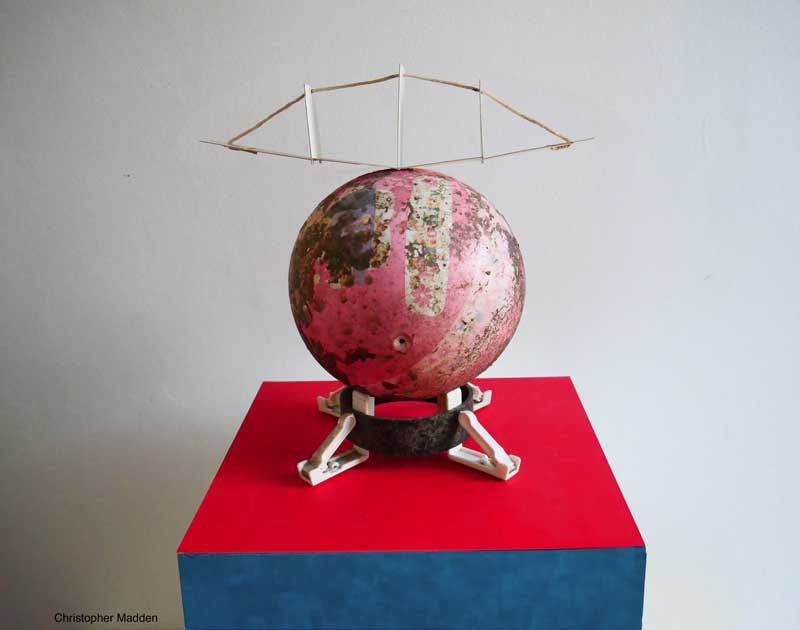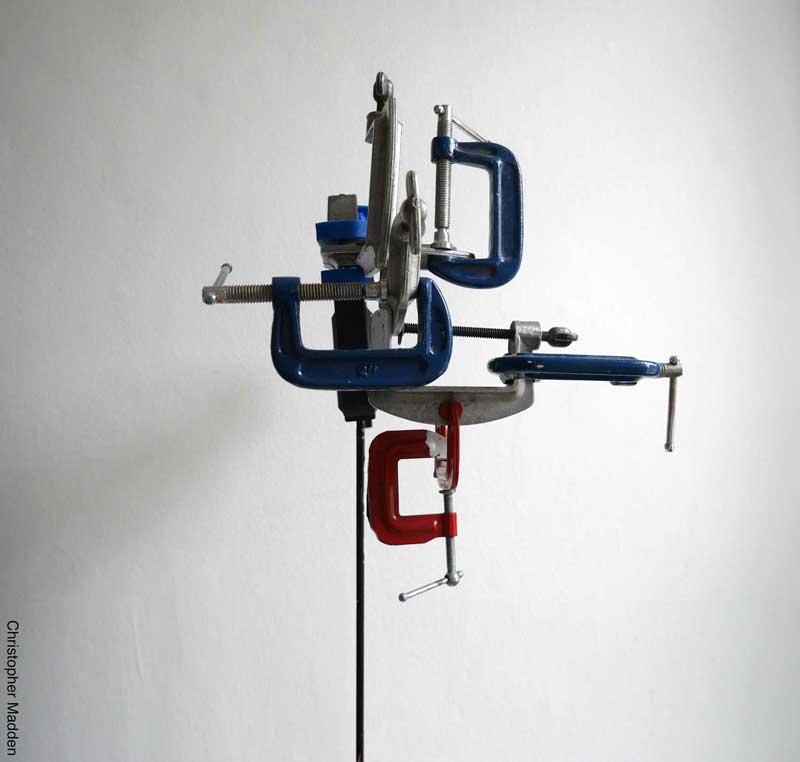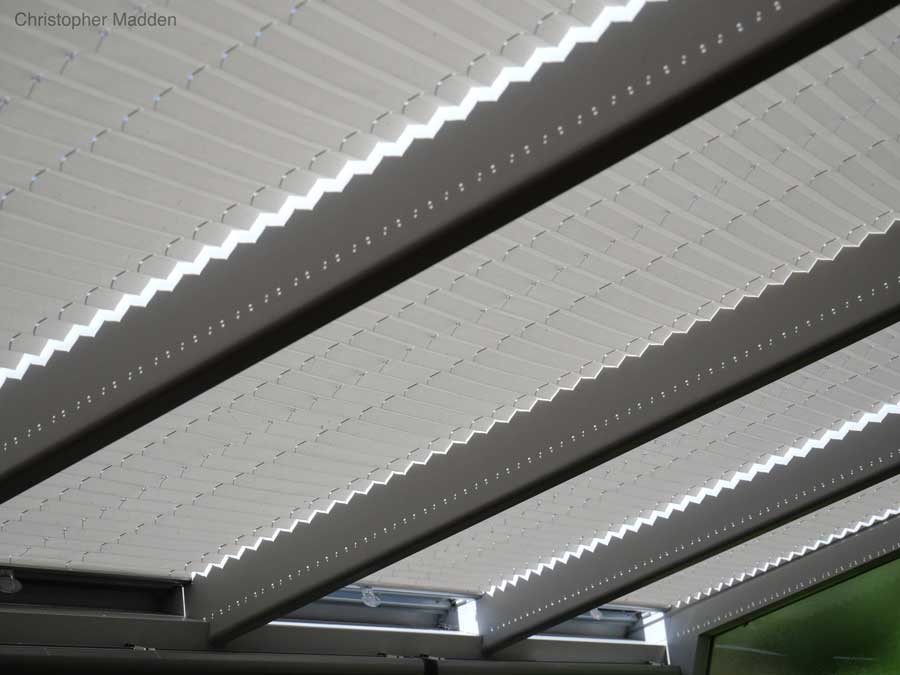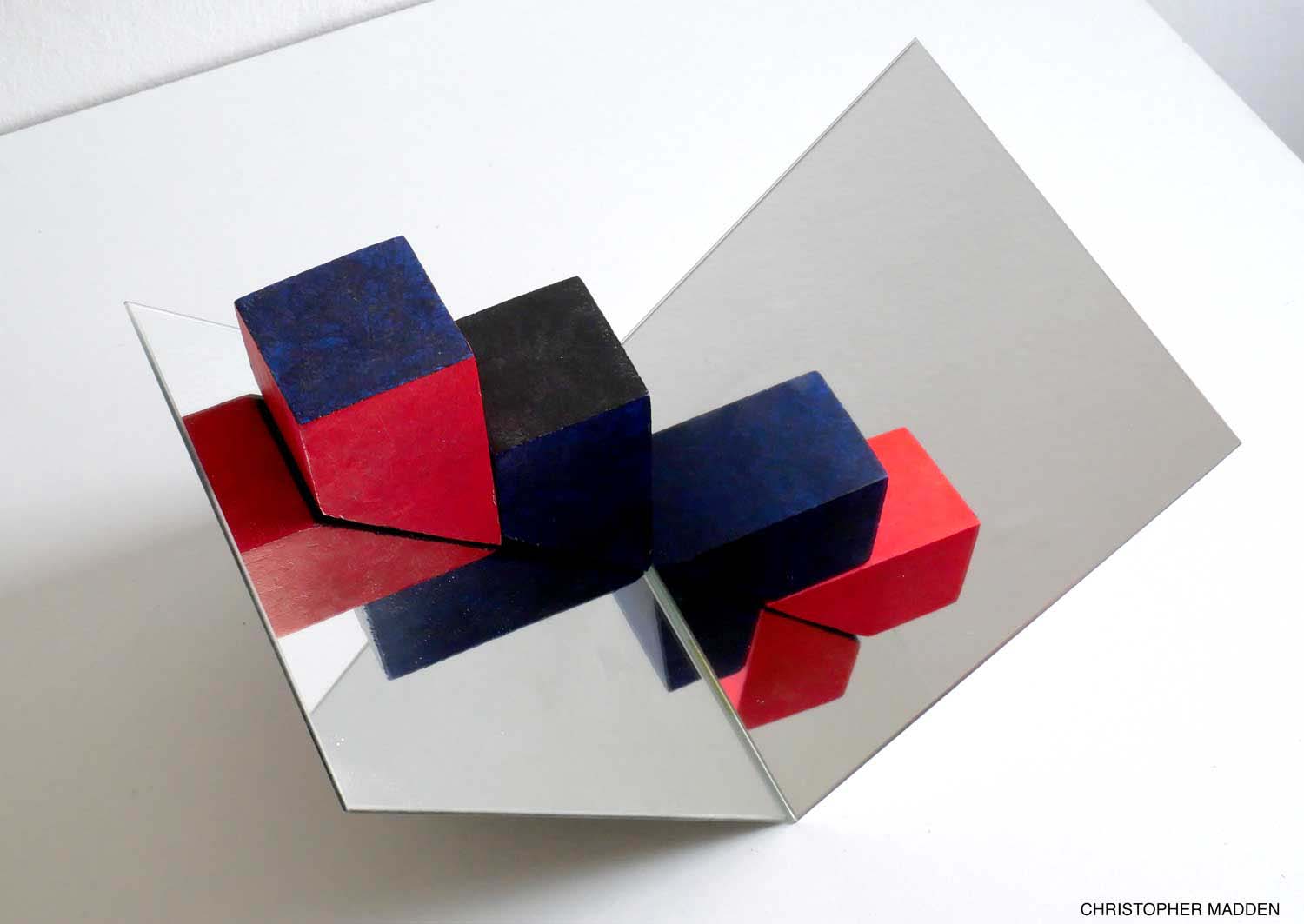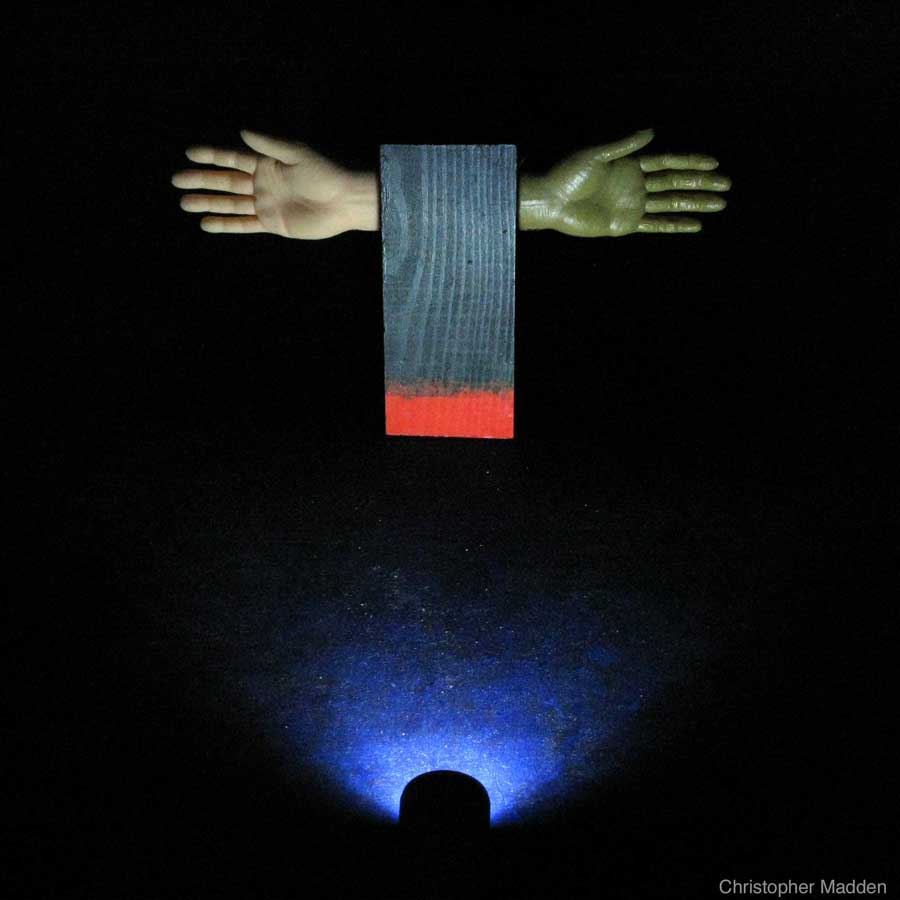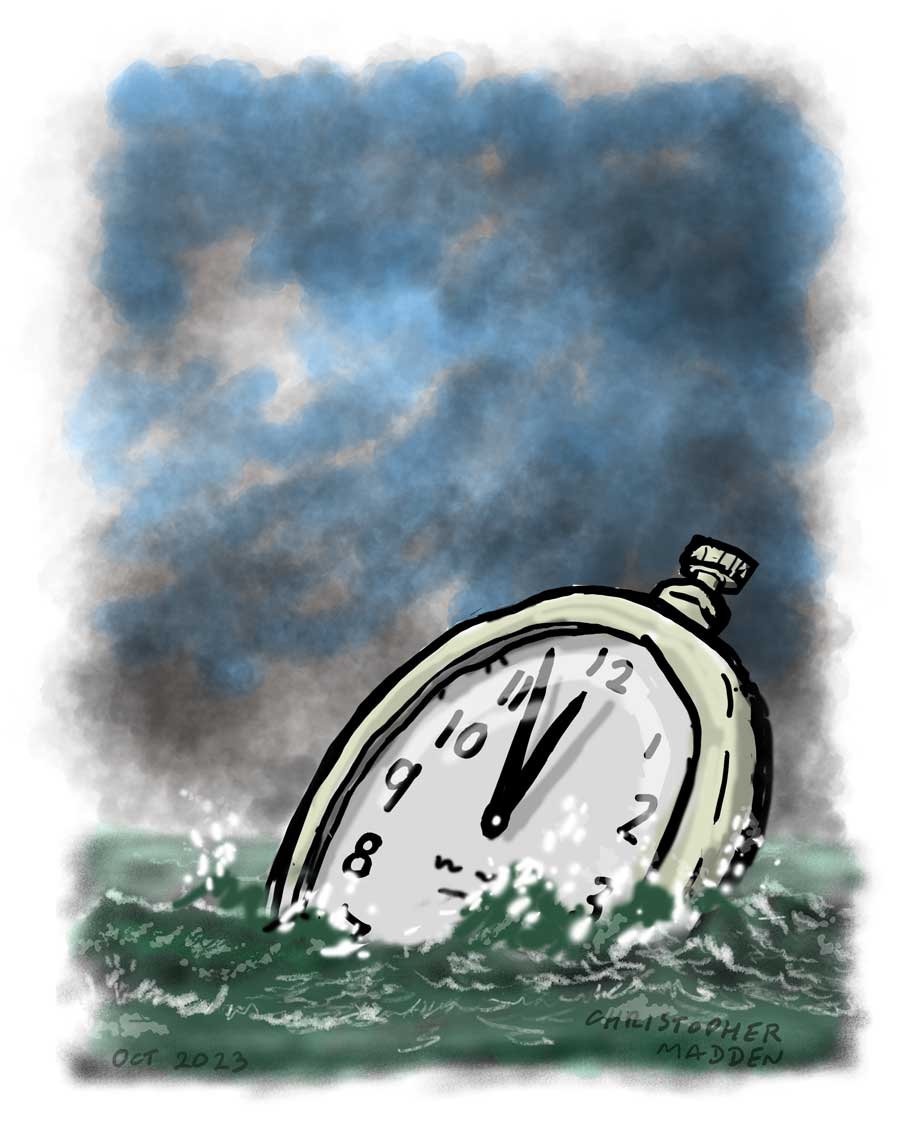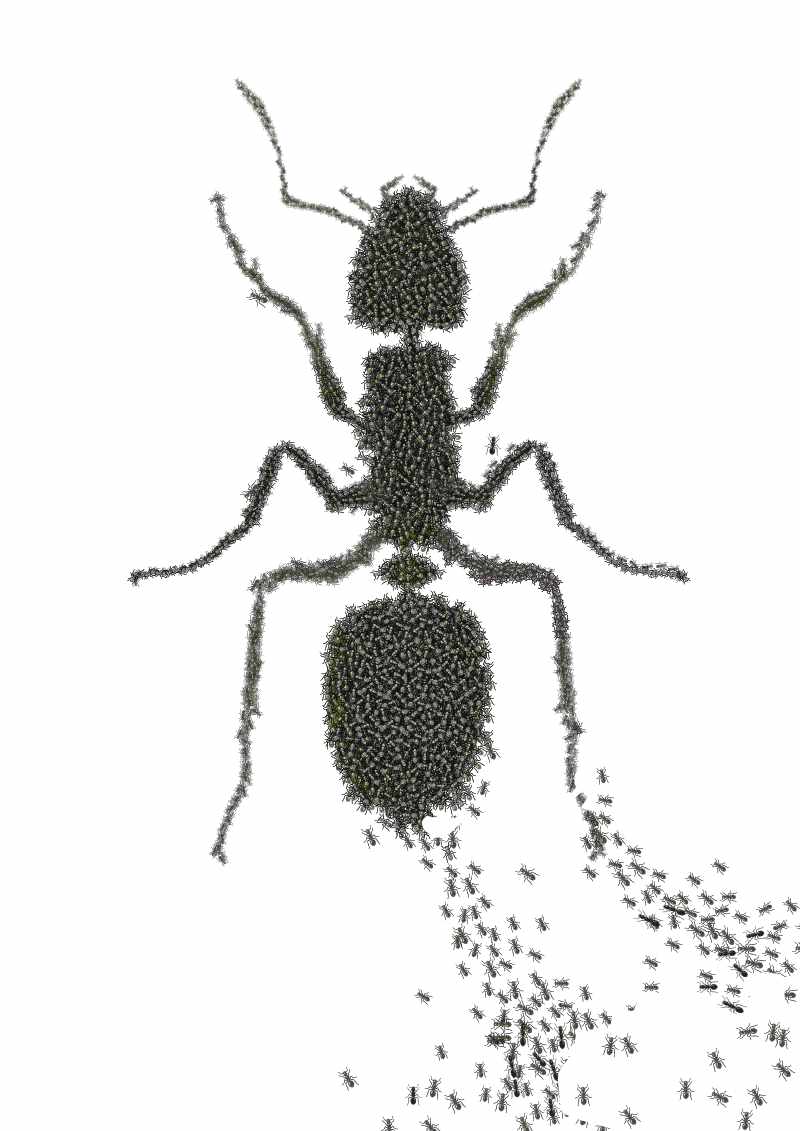
Superorganism of ants or the ants’ hive mind
Digital image May 2022
An image of a swarm of ants forming the shape of one giant ant.
The image is intended to convey the scientific concept of the superorganism, where the individual members of an animal community (often insects such as bees, wasps or ants) cannot exist as individuals but have to function as part of a larger unified communal entity.
The concept of the superorganism is similar to the concept of the hive mind. The hive mind is perhaps more closely identified with neural activity rather than physical activity, and in human society is associated with the concepts of collective consciousness, group think and other thought processes. Hive mind activities such as group think are not necessarily positive.
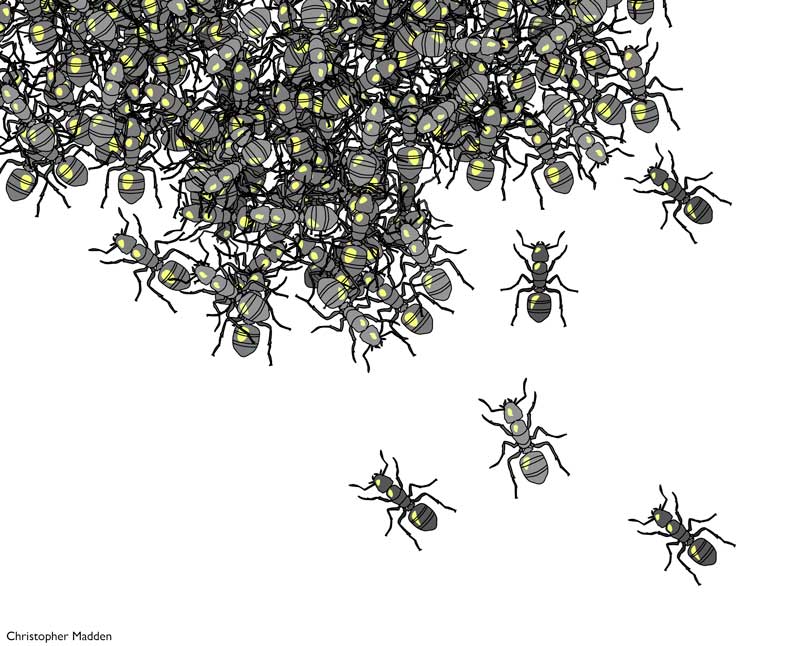
The work reflects my interest in science, evolution, the natural world and the environment. It is based on a conncept and image that I created in the 1990s for the Guardian newspaper.
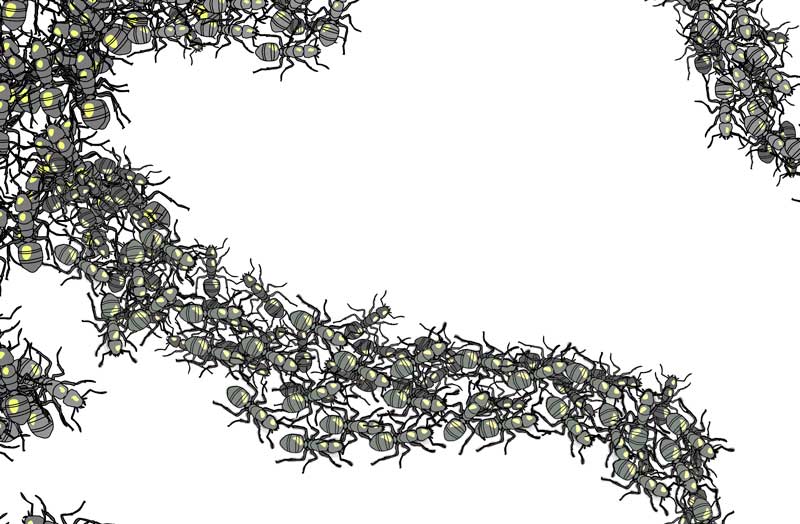
Some people argue that human society is a superorganism, generally on the grounds that we live in an incredibly complex society that is full of specialisation of roles, and that society would fall apart if some of these roles were to fail to function. This definition however doesn’t take into account one of the prerequisites of a superorganism, which is that the individual organisms within the superorganism can’t survive alone. Humans can easily survive even if our complex society collapses – there are people all around the world doing that very thing right now.
